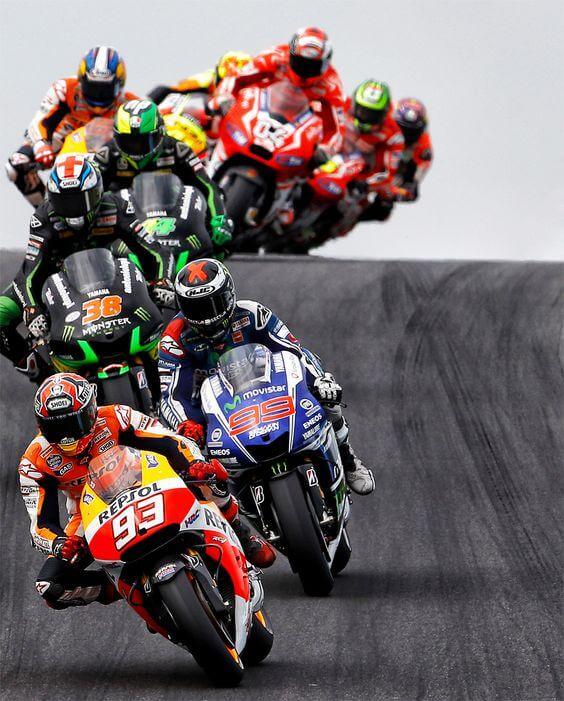Part 2 - Countdown 5-1: TEN GP BIKES THAT PUSHED THE ENGINEERING BOUNDARIES

5. Kawasaki KR500 (1980)
The Ducati Desmosedici wasn’t the first bike to explore carbon fiber frame and Panigale’s frameless technology, called the monocoque. The concept had begun years before in 1980 with Kawasaki KR500. The steering head and swingarm pivot structures were welded directly to the fuel tank which was effectively the bike’s main structure. The idea continued into 1981 before Kawasaki settled on an aluminum backbone and conventional fuel tank from 1982.
 Courtesy of www.rallystar.net
Courtesy of www.rallystar.net
4. Honda NR500 (1979)
Honda has always been the purveyor of new ideas in GP racing since their return in 1979. As the regulations limited machines to a 500cc ceiling, two-stroke or four-stroke, other manufacturers had chosen the two-stroke route for higher specific power output. Honda, on the other hand, had wanted to prove their four-stroke prowess.
 Courtesy of motorcyclenews.com
Courtesy of motorcyclenews.com
But in order to compete toe-to-toe, Honda devised the NR500 four-stroke V4 with oval pistons, eight valves per cylinder and two conrods per piston; in order to mimic a V8. The engine revved to 20,000 RPM.
It didn’t end there as the frame was a monocoque feature where the lower fairing panels we actually structural to mount the radiators at the side.
The bike was over-complex and didn’t do well despite valiant efforts by Freddie Spencer. Honda resorted to the two-stroke format in 1984.
3. Honda NSR500 (1984)
The hallowed name “NSR500” may have won a great number of races and championships, but it didn’t have an easy start. The first NSR500 in 1984 had its fuel tank mounted under the engine. The exhausts were routed over the top.
 Courtesy of wikipedia.org
Courtesy of wikipedia.org
Honda was thinking about lower center of gravity and that the bike’s handling as the tank emptied later in the race. Factory rider, Freddie Spencer found the bike hard to ride, although he did win the bike’s second race. He returned to the previous year’s 3-cylinder NS500 for the rest of the 1984 season.
2. Honda RC211V (2002)
The RC211V four-stroke carried on what the NSR500 two-stroke had done earlier: Winning.
When Honda showed off the V5, no one outside the factory had any idea how or if it would work. Honda has never revealed the secrets of the V5, including how they overcame crank balance problems.
 Courtesy of yudibalang.com
Courtesy of yudibalang.com
Apart from the engine, it was the RC211V which started the “mass centralization” revolution that we see on virtually every sportbike nowadays.
1. Ducati Desmosedici GP17 (2017)
Casey Stoner may have won the 2007 MotoGP championship on the GP7, but it was the GP17 which truly turned the Italian manufacturer’s fortune around, through some relentless development.
 Courtesy of foxsports.it
Courtesy of foxsports.it
Ducati had developed “winglets” for the GP16 on the previous year to combat front wheel lift (the wheelie) when exiting corners. The bike’s traction control will cut power when the front tries do lift. But the idea hit a brick wall when other manufacturers protested.
So, Ducati went back to the drawing board and created the “aero body” for the GP17. Andrea Dovizioso guided the GP17 to six race wins and was the title contender right down to the last race of the season.